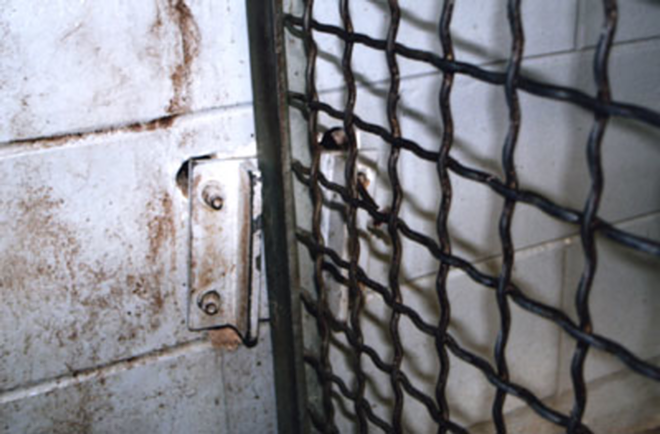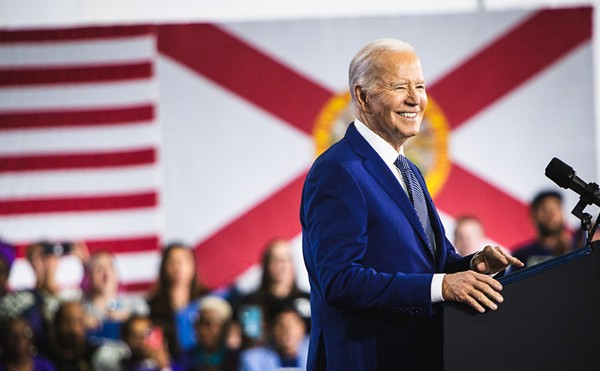
The last four years had been good for Tampa's Lowry Park Zoo. Attendance steadily climbed each year as new attractions were unveiled. Hundreds of thousands of adults and children entered the zoo to catch a glimpse of a baby elephant or orangutan.
But away from the gawking tourists and excited schoolchildren, some zoo employees were having a markedly different experience. Zookeepers Brian Czarnik and Carie Peterson complained of deteriorating and warped doors on the night houses, and overworked employees. Outreach education specialist Coleen Kremer felt the zoo was drifting away from its commitment to animal welfare. Security guard Jeff Kremer (Coleen's husband) repeatedly noticed maintenance problems and security issues unresolved for months. His supervisor Richard Justice, manager of security, became increasingly frustrated that his own supervisors were not listening to his pleas for better training and updated security and safety measures.
By July, they had all left the zoo. Frustrated by the lack of media coverage of these problems, Czarnik met with a Creative Loafing reporter to explain the dangers he saw facing the zoo, its employees and animals.
"It's an insane work environment," he said the night of Aug. 21. "Something bad is going to happen."
The next day, it did.
On Aug. 22, at roughly 5 p.m., a newly hired 24-year-old zookeeper placed Enshalla, one of the two Sumatran tigers at the zoo, into her night house in the Asia Domain. On his way out, the zookeeper forgot to lock one of the latches on the tiger's gate. Within minutes, Enshalla was out, roaming the empty exhibits adjacent to her enclosure. Zoo employees scrambled to get the remaining visitors out of the park or into a building. The zoo's chief executive, Lex Salisbury, and veterinarian David Murphy were called. While the animal prowled the dry moat of the former rhino habitat, Dr. Murphy and Salisbury, armed respectively with a tranquilizer and a 12-gauge shotgun, positioned themselves in the grass above the moat. When Murphy shot Enshalla with the tranquilizer, the tiger leapt toward him. Salisbury, in a split-second decision, shot Enshalla in midleap. She fell to the ground and, after three more shots, lay dead.
Zoo officials blamed the tiger's escape on "human error." They fired the zookeeper (his name has not yet been released); the man faces criminal charges for leaving the tiger's cage unlocked. But in interviews with CL, ex-employees of the zoo say that the conditions for such an error existed before the incident and remain a problem at the zoo. An Aug. 23 inspection report from U.S. Department of Agriculture's Animal and Plant Health Inspection Service backs some of their complaints. In the report, USDA inspectors cited the zoo for six infractions, including an insufficient number of employees handling dangerous animals, lack of zookeeper training, deteriorating primate enclosures (including peeling paint) and damaged doors on the Colobus monkey and rhino enclosures.
Justice, the former manager of security, says, "There are basic operational rules that any company in the world will at least pay lip service to as far as training, retention of employees and basic safety practices. The zoo has none of these."
Zoo officials have refused to discuss these concerns with CL, saying it is a personnel matter. And yet, without any dialogue from zoo administrators and a lack in public oversight of the nonprofit institution, the former employees wonder: Will another grave tragedy occur?
The 49-year-old Lowry Park Zoo has weathered criticism in the past, but complaints have usually led to improvements. In the early 1980s, the Humane Society of the United States named it one of the 10 worst zoos in the United States, and the public outcry over the zoo's treatment of animals led to its short-term closure. After a combined effort by citizens and Tampa city officials, a new $20 million Lowry Park Zoo emerged in 1988. The following year, the primary (and voluntary) zoo regulatory agency, the Association of Zoos and Aquariums, accredited the park, solidifying its new animal-friendly bent.

Although some problems occurred over the next two decades — an elephant killed a zookeeper in 1993, and controversies arose periodically about the zoo's breeding and animal trading practices — most people agreed Lowry Park Zoo had overcome the tainted image of its past. Habitats for the animals were enlarged and now are spacious with plenty of shade. Elephants, which once stood chained to concrete slabs waiting to give rides in the hot sun, now roam freely over 2.5 acres. The zoo became a leader in manatee recovery efforts. In 2004, Lowry Park received its highest distinction yet — named "No. 1 Family Friendly Zoo in the United States" by Child magazine.
"The first years were great," says Peterson, who volunteered with the zoo two years before being hired in 1999. "It felt like it was a big family."















